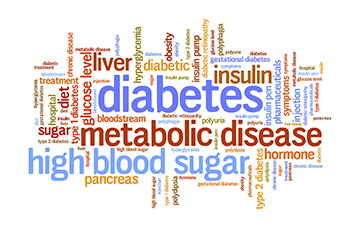



A new way to suppress the liver’s glucose production has been identified, thanks to a chemical screen that can quantify the ability of small molecules to increase the acetylation of a gene coactivator, peroxisome proliferator-activated receptor-gamma coactivator 1 alpha (PGC-1α). This coactivator is of interest to diabetes researchers because it plays a pivotal role in energy balance and helps control genes involved in energy metabolism.

A team of scientists from the Florida campus of The Scripps Research Institute (TSRI), Dana-Farber Cancer Institute, Harvard Medical School and the Yale University School of Medicine have identified a new class of compounds that reduce production of glucose in the liver. One of these compounds, designed and optimized by TSRI scientists, significantly improves the health of diabetic animal models by reducing glucose levels in the blood, increasing insulin sensitivity, and improving glucose balance.
When cells overexpress PGC-1, during fasting or starvation, for example, glucose production in the liver soars. But when scientists modify PGC-1α function through acetylation, glucose production declines. Essentially, when PGC-1α is acetylated, it slows production along the gluconeogenic pathway.
Scientists hypothesized that targeting PGC-1α acetylation in the liver could be used for treatment of type 2 diabetes (T2D).
Ultimately the scientists identified a new class of compounds that increase PGC-1 acetylation. One of these compounds, designed and optimized by TSRI scientists, significantly improves the health of diabetic animal models by reducing glucose levels in the blood, increasing insulin sensitivity, and improving glucose balance.
In the field of metabolic diseases, Medicilon has a portfolio of stable and effective animal models, including for Non-alcoholic Fatty Liver Disease (NAFLD), obesity and diabetes.
Detailed findings appeared March 23 in the journal Cell, in an article entitled, “Selective Chemical Inhibition of PGC-1α Gluconeogenic Activity Ameliorates Type 2 Diabetes.” The article describes how the scientists designed a high-throughput chemical screen platform to quantify PGC-1α acetylation in cells.
“On the basis of potency and bioavailability,” the article’s authors wrote, “we selected a small molecule, SR-18292, that reduces blood glucose, strongly increases hepatic insulin sensitivity, and improves glucose homeostasis in dietary and genetic mouse models of T2D.”
“SR-18292 suppresses HNF4α/PGC-1α gluconeogenic transcriptional function,” the authors added. “SR-18292 improves insulin sensitivity and reduces blood glucose in T2D mice.”
The study was led by Pere Puigsever, Ph.D., of Harvard Medical School and the Dana-Farber Cancer Institute and included Patrick Griffin, Ph.D., co-chair of the TSRI department of molecular medicine, and Theodore Kamenecka, Ph.D., TSRI associate professor of molecular medicine.
“PGC-1α was generally considered nondruggable,” said Dr. Griffin. “But the team approached the problem through the process of acetylation, which means we can influence the protein’s behavior indirectly. SR-18292 increases acetylation of PGC-1, which in turn shuts down glucose production in liver cells.”
“After the screening process found several potential candidates, the TSRI team designed derivatives of those initial hits,” noted Dr. Griffin. “We selected this compound based on its ability to induce acetylation and the fact that it had good pharmaceutical properties—so we could use it in animal models of type 2 diabetes.”
It isn’t known at this point what protein or enzyme is directly targeted by SR-18292. Nonetheless, Dr. Griffin asserted that SR-18292, plus several others identified in the current study, can be used as chemical tools to assess the regulation of glucose metabolism. The researchers added that these same small molecules could one day be developed as either a single agent to treat diabetes or used in combination with current antidiabetic drugs.
 Relevant
news
Relevant
news